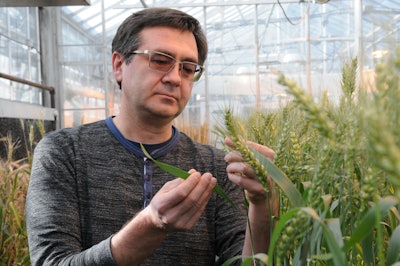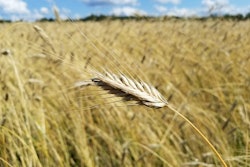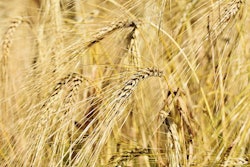
Kansas State Universityresearchers continue to unlock the complexity of the wheat genome, recently publishing findings of a study that characterized numerous genes duplicated thousands of years ago to understand how they control wheat yield and other desirable traits.
Wheat geneticist Eduard Akhunov, the director ofK-State’s Wheat Genetic Resources Center, says his team’s research may lead to greater opportunities for breeders to perform “targeted breeding” that can increase grain size and number – ultimately increasing yields.
Akhunov says the researchers studied the role of gene copies available from each of the respective genomes in polyploid crops, those that contain more than two sets of chromosomes, in shaping main agronomic traits.
Bread wheat, he added, is polyploid, formed nearly 10,000 years ago from merging the genomes of two wild ancestors: tetraploid wild emmer wheat (which has a genome formula known as AB) and diploid goatgrass (with genome formula D).
“As a result, most genes in wheat exist in three copies, one from each of the A, B and D genomes” Akhunov explains.
“This gene redundancy creates a number of possibilities for interactions between genes and has, over time, contributed to new adaptations, making wheat capable of growing and producing grain in more diverse climatic conditions."
Current study
In the current study,K-Stateresearchers tested combinations of the gene copies to see what impact they would have on wheat’s growth and productivity.
“Normally, gene copies from each of (three) respective genomes in wheat are expressed in equal proportions,” Akhunov says.
“But we found that there is a relatively small subset of genes where copies from different wheat genomes are expressed at different levels,” referred to as an imbalanced expression of genes.
The imbalanced expression of genes, he added, turned out to have a positive effect on the wheat plant, in many cases increasing grain size, weight and number.
“Our study suggests that over many years, breeders have been selecting combinations of imbalanced genes that positively impacted yield in diverse climatic environments,” Akhunov says.
Improving yields
Important for wheat growers: breeders could use this knowledge to develop new high-yielding wheat varieties capable of growing in a variety of climates.
According to an article from theNational Center for Biotechnology Information, polyploidy is a “major force in the evolution of both wild and cultivated plants.” Scientists believe polyploid organisms exhibit increased vigor and -- in some cases -- outperform their diploid relatives in several aspects.
K-State’s work on this project is summarized in the February 11 issue ofNature Communications.
Akhunov says the research represents a large effort led by his research lab in collaboration with theWheat Coordinated Agricultural Project, and funded by the USDANational Institute of Food and Agriculture, and theBill and Melinda Gates Foundation.
The project was part of theInternational Wheat Yield Partnershipin which wheat researchers around the world are cooperating to find solutions to increase wheat yields.
Read the articleon the K-State Research and Extension website.






















